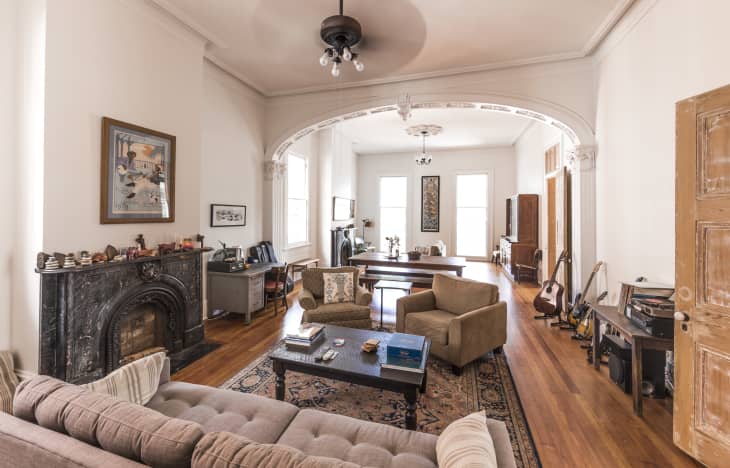High Ceilings Are Totally Overrated—Here’s Why

It’s not hard to see why high ceilings are highly-coveted real estate assets: Being typically found in pre-war homes, they give a historic feel and evoke a sense of grandeur. After all, a chandelier looks a bit more stately hanging from a 18-foot ceiling than an eight-foot one.
They’re not just impressive looking, either. Tall ceilings also make spaces look and feel bigger than they actually are—a nifty trick in otherwise small apartments.
But such great heights often come with unanticipated inconveniences. According to Caroline Bass, a real estate agent with Corcoran in New York City, high ceilings aren’t all they’re cracked up to be. Here are four reasons she says this architectural indulgence usually ends up being less-than-luxurious for homeowners:
1. Maintenance
It wasn’t just a play on words: Ceilings do crack. Just like any other wall, they need repairs and fresh coats of paint. This can be difficult to accomplish when a ceiling is twice as high as your tallest household member. Plus, older homes tend to have ornate crown molding that are a pain to clean at any level, let alone at 10 feet or higher.
Bass has high ceilings in her Hamptons townhouse and recalls a nightmarish scene when she and her husband had to replace some light bulbs:
“We had to buy a special ladder just so we could get up to change the lights,” Bass says. Once the light bulbs were replaced, the couple was confronted with a new problem: Where would they store this newly acquired, extra-long tool in their apartment?
2. Noise
Cavernous rooms create echoes and can carry noises, big and small, throughout the home—and even next door. This can cause headaches for anyone trying to concentrate, sleep, or just generally enjoy the sound of silence.
Bass’s husband plays guitar and she notes that the other residents of their townhouse row definitely hear his tunes when he plays. She says her neighbors don’t mind, but all neighbors might not have an appreciation for music.
“They might not be as welcoming,” she warns.
3. Heat
Since heat rises, it can get awfully chilly under a tall ceiling. And compensating for this can make a dent in your wallet when your utilities aren’t covered by your landlord:
“Our cost of heating was a lot more expensive than I would have anticipated,” Bass says of her vaulted townhouse.
4. Price
In addition to heating costs, homes with high ceilings are often at a premium. Though they don’t actually make a space bigger, Bass says the mere illusion that they do makes them more expensive to buy.
According to Michael Vargas of the New York City-based Vanderbilt Appraisal Company, high ceilings can tack on as much as 10 to 15 percent to a home’s price—a pretty high price to pay for otherwise unusable space.
Do you think tall ceilings are worth it? What other luxurious features do you find overrated?